Note: This novel was WINNER of the August Prize, Sweden’s top literary prize, in 2009 when it was published there.
“The Chairman confessed that he had a dream…He would demonstrate to the authorities what capable workers the Jews are, so they would [agree] to extend the ghetto…and when the war was over, the authorities would declare the ghetto a Protectorate …a Jewish free state under German supremacy where freedom had been honestly won at the price of hard work.”
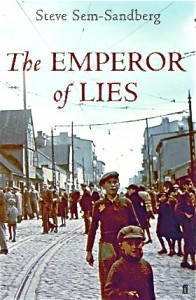 It is no overstatement to compare Swedish author Steve Sem-Sandberg’s epic novel about the people in the Lodz ghetto during World War II to Tolstoy’s War and Peace, published almost one hundred fifty years earlier. The real life dramas which the book illustrates, the memorable characters, the carefully developed themes which Sem-Sandburg treats in new ways, and the magnitude of the horrors easily make this book the equal of Tolstoy’s epic. The nature of the subject matter, of course, precludes any hint of romanticism here, but Sem-Sandburg is so good at varying scenes involving a series of fully human, repeating characters, that I cannot imagine any reader not becoming totally engaged with them, even though their stories have been created from piles of archival records, lists, and photographs and obviously have no happy endings. Beautifully written to memorialize the people of the ghetto, rather than the horrors of the Holocaust itself, this book is an awe-inspiring literary achievement.
It is no overstatement to compare Swedish author Steve Sem-Sandberg’s epic novel about the people in the Lodz ghetto during World War II to Tolstoy’s War and Peace, published almost one hundred fifty years earlier. The real life dramas which the book illustrates, the memorable characters, the carefully developed themes which Sem-Sandburg treats in new ways, and the magnitude of the horrors easily make this book the equal of Tolstoy’s epic. The nature of the subject matter, of course, precludes any hint of romanticism here, but Sem-Sandburg is so good at varying scenes involving a series of fully human, repeating characters, that I cannot imagine any reader not becoming totally engaged with them, even though their stories have been created from piles of archival records, lists, and photographs and obviously have no happy endings. Beautifully written to memorialize the people of the ghetto, rather than the horrors of the Holocaust itself, this book is an awe-inspiring literary achievement.

Taking place between 1940 and 1944, the novel opens with two contrasting passages. The first, a memorandum from December, 1939, announces the Germans’ intention to enclose the two hundred twenty-thousand Jews in Lodz within a ghetto—“a temporary measure,” though “The ultimate aim must be to burn away this infectious abscess entirely, once and for all.” In the second passage, a scene from September 1 – 4, 1942, Mordechai Chaim Rumkowsky, Chairman of the Jews’ Ruling Council of Elders, who serves as liaison between the Germans and the people of the ghetto, must give the population news so inhuman, so devastating, that Adam Czerniakow, Chairman of the Warsaw ghetto, took cyanide rather than give that same news to his own people. Ten thousand residents, chosen from lists of babies and children under the age of ten and the “elderly” over the age of sixty-five, were to be handed over to the Gestapo for immediate “relocation.”
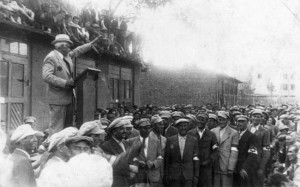 The philosophy of Rumkowski from the outset had been to make his ghetto so indispensable to the Nazi war machine because of its productivity that they would be spared deportation—at least a sizable number would be. “When the Germans spoke of Jews,” he knew “they were speaking not of human beings but of a potentially useful though basically repulsive raw material…[thought of] in collective form. In fixed numbers. Quotas, quantities.” And Rumkowski believed that “to make the monster understand what you mean, you yourself had to start thinking like the monster. See not one [person], but a larger number.” A believer in utilitarian goals, he consistently aimed to achieve the greatest good for the greatest number of people. It is this belief which lies at the heart of the moral conundrum against which Rumkowski is always judged by history. Some believe that he was heartless, morally bankrupt, inhuman. Others, especially some who survived their eventual deportation, believe that Rumkowski was their savior—they lived because they were able to earn enough food by working.
The philosophy of Rumkowski from the outset had been to make his ghetto so indispensable to the Nazi war machine because of its productivity that they would be spared deportation—at least a sizable number would be. “When the Germans spoke of Jews,” he knew “they were speaking not of human beings but of a potentially useful though basically repulsive raw material…[thought of] in collective form. In fixed numbers. Quotas, quantities.” And Rumkowski believed that “to make the monster understand what you mean, you yourself had to start thinking like the monster. See not one [person], but a larger number.” A believer in utilitarian goals, he consistently aimed to achieve the greatest good for the greatest number of people. It is this belief which lies at the heart of the moral conundrum against which Rumkowski is always judged by history. Some believe that he was heartless, morally bankrupt, inhuman. Others, especially some who survived their eventual deportation, believe that Rumkowski was their savior—they lived because they were able to earn enough food by working.
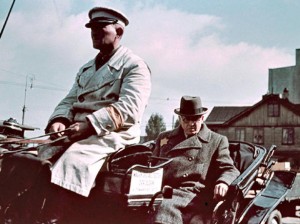
After Rumkowsky makes the dreaded announcement in September, 1942, the novel backs up to 1940, providing details from Rumkowski’s life and the lives of others in the ghetto, along with other decisions he has had to make in the months leading up to that September. Wonderful repeating characters from various levels of society come alive here (or as alive as characters in their situation can be): Mara, a paralyzed “mystic,” the daughter of a rabbi; “Princess Helena,” the Chairman’s sister-in-law, with her airs and expectations; Vera Schulz, the daughter of a wealthy doctor newly arrived from Czechoslovakia, who develops an underground life; Adam Rzepin, a young street urchin who fears nothing and who has a sister who hears angels; Rosa Smolenska, the loving teacher who runs the orphanage on the outskirts of the ghetto; an orphan boy who does not know his name and who is dubbed Werner Samstag; Stanislaw Stein, a young child whose adoption is full of surprises, both happy and horror-filled; Josef Feldman, a manual laborer with a good heart, who becomes a sounding board for the Chairman.
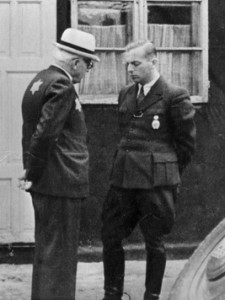 Not all the ghetto characters are good. There are gangs and Jewish crooks who act as bullies and shake down those who need favors, including Schlomo Hercberg, on the Resettlement Commission, who is getting rich from bribes; and David Gertler, the head of the ghetto police, who is famous for his shakedowns and his drive for power.
Not all the ghetto characters are good. There are gangs and Jewish crooks who act as bullies and shake down those who need favors, including Schlomo Hercberg, on the Resettlement Commission, who is getting rich from bribes; and David Gertler, the head of the ghetto police, who is famous for his shakedowns and his drive for power.
Throughout Rumkowsky’s administration, there are also domestic issues over which he has little real control but which the German administration expects him to solve: food riots by starving people, epidemics, strikes by workers, horrific overcrowding, and the psychological trauma of the population as truckloads of “recycled” clothing, which smells of disinfectant, arrive to be sorted every day, some still containing personal possessions. The Germans also conduct unexpected purges, at one point removing various groups of people without letting Rumkowsky know about it.
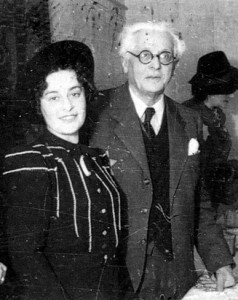
Rumkowski retains his Chairmanship after the September 4, 1942, speech to parents and the elderly, but he appears to be a broken man. Childless himself, he had spent years setting up and sponsoring orphanages and programs for orphans, and, he tells his audience, “I would never have imagined that it would be I who was obliged to take the sacrificial lambs to the altar. But in the autumn of my years, I must now reach out my hands and ask: ‘Brothers and sisters, give them to me. Give me your children…Give me these sacrificial victims in order that I may save others from being sacrificed, in order that I may save a hundred thousand Jews. That was what they promised me…”
Photos, in order: The author’s photo by Caroline Andersson is from http://www.faber.co.uk
Rumkowski speaking to the crowd appears here: http://www1.yadvashem.org
Throughout his Chairmanship, Rumkowski was driven in a horse-drawn carriage. His carriage driver was Lev Kuper. http://www.thestar.com
Rumkowski talks with Hans Biebow, the head of the German civilian administration. After the war, Biebow escaped into hiding in Germany but was recognized by a survivor of Lodz, arrested, and extradited to Lodz in 1947, where he was tried and executed. http://collections.yadvashem.org
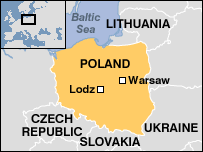 Rumkowski married his second wife, Regina Rumkowska, in 1941, hoping to have a child of his own. http://collections.yadvashem.org
Rumkowski married his second wife, Regina Rumkowska, in 1941, hoping to have a child of his own. http://collections.yadvashem.org
The map of Poland is from http://news.bbc.co.uk
Mendell Grossman was a photographer of the Lodz ghetto, and many of his photos are on-line. In this article he describes how he was able to take these photos secretly. http://www.holocaustresearchproject.org
Many videos appear on YouTube about the Lodz ghetto, but some of them are too painful to watch. This one features Yosef Neuhaus talking instead about the vibrancy of the Lodz community, and showing film of it before and after World War II.
